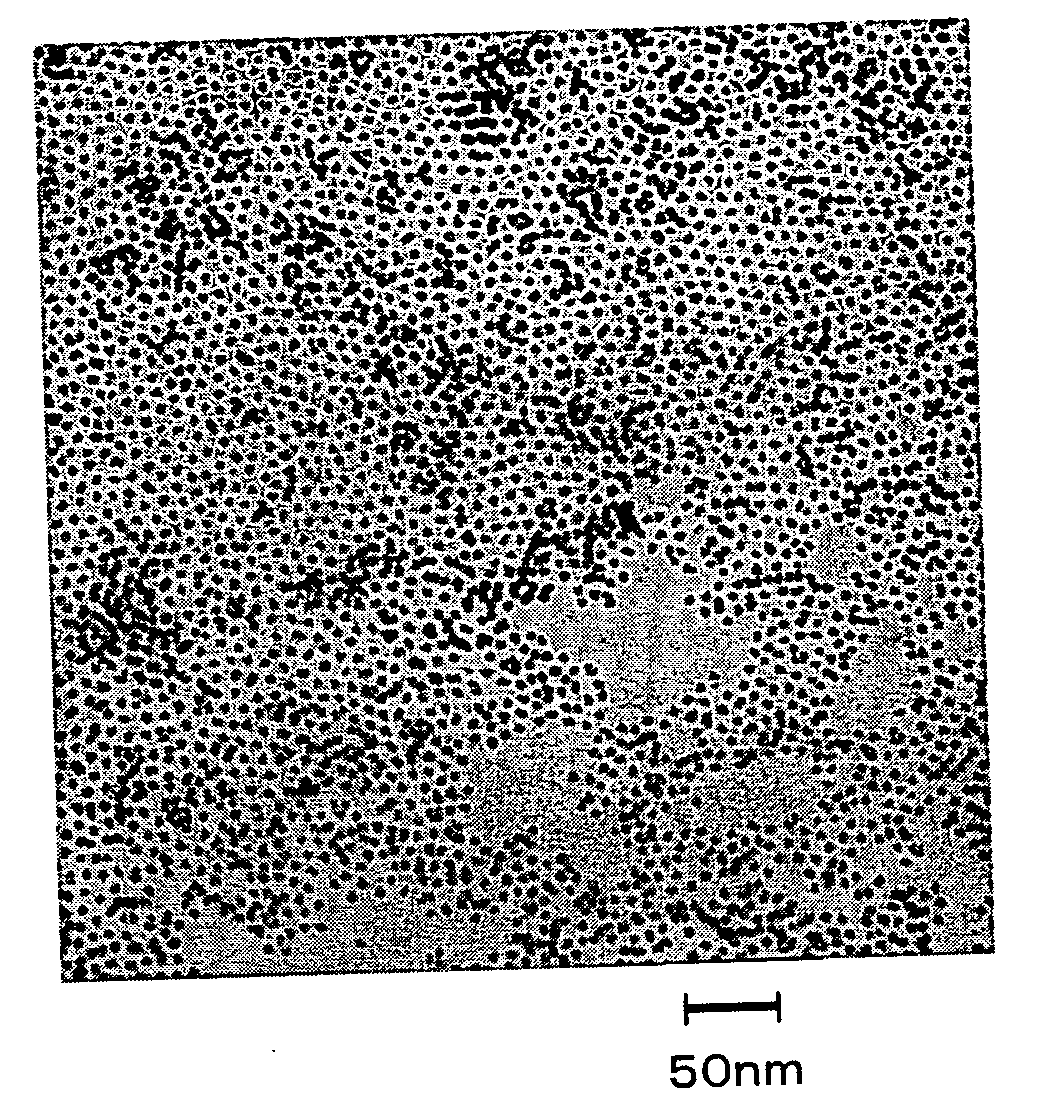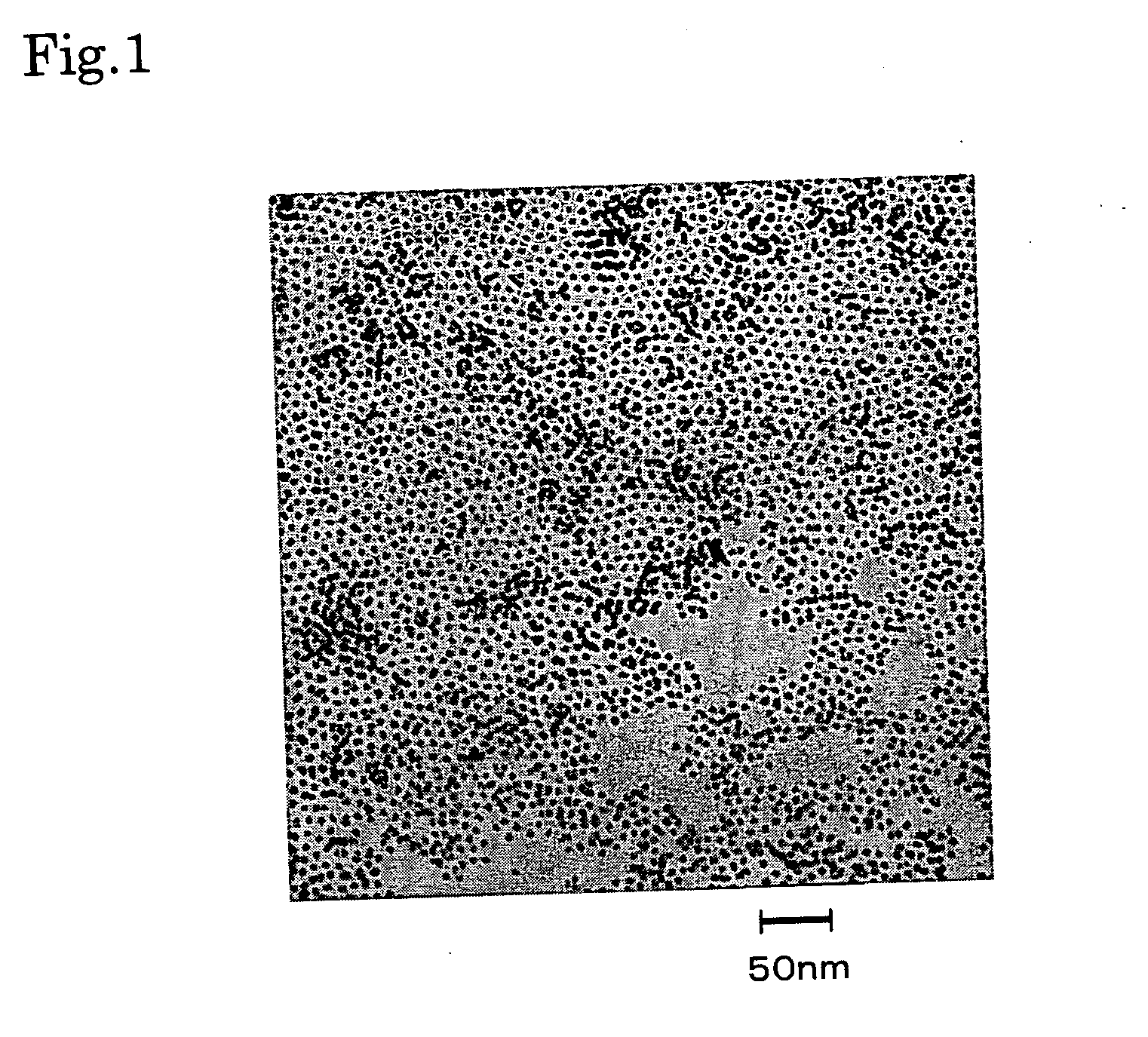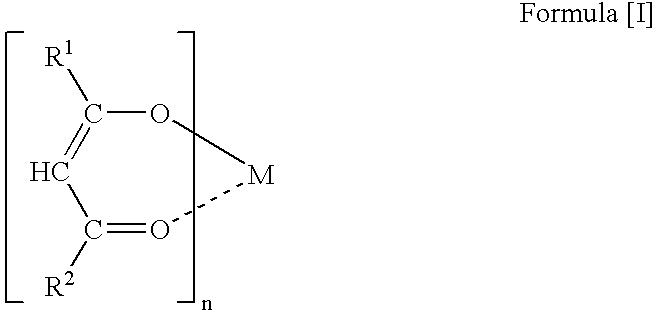Method for extracting magnetically hard alloy nanoparticles and magnetic recording material
a technology of magnetic recording material and hard alloy, which is applied in the direction of magnetic materials for record carriers, magnetic bodies, instruments, etc., can solve the problems of inhibiting phase transformation, increasing particle size, and inability to use magnetic recording media, and achieves the effect of reducing drying load and short tim
- Summary
- Abstract
- Description
- Claims
- Application Information
AI Technical Summary
Benefits of technology
Problems solved by technology
Method used
Image
Examples
example 1
[0042] Pt(II) 2,4-pentanedionate (1.00 g) and Fe(III) 2,4-pentanedionate (0.89 g) were dissolved in tetraethylene glycol (150 ml), heated to 300° C. by irradiation of microwaves of 2.45 GHz and 650 W with nitrogen gas bubbling, and reacted at the same temperature for 50 minutes by turning on and off a microwave generator. The reaction mixture was cooled to room temperature, then added with water (300 ml) and a solution (150 ml) containing dodecanethiol (2 ml) in isooctane, and shaken for extraction. It was found by ICP and XRD analyses that the extract contained FePt alloy nanoparticles (elemental ratio: approximately 1:1, average particle size: 5.1 nm). TEM analysis showed that the FePt alloy nanoparticles in the extract contained almost no particle aggregation (see FIG. 1). The extract was concentrated to about 15 ml by using an evaporator, added with methanol (100 ml) and subjected to ultrafiltration to collect the alloy nanoparticles and remove methanol together with excessive d...
example 2
[0043] Pt(II) 2,4-pentanedionate (0.79 g), Fe(III) 2,4-pentanedionate (0.71 g) and copper(II) acetate (0.18 g) were dissolved in diethylene glycol (150 ml), heated to 240° C. by irradiation of microwaves of 2.45 GHz and 650 W with nitrogen gas bubbling, and reacted (refluxed) at the same temperature for 1 hour by turning on and off a microwave generator. The reaction mixture was cooled to room temperature, then added with methanol (800 ml) containing oleic acid (2 ml), and stirred. The reaction mixture was centrifuged at 8000 rpm, and the supernatant was discarded. The precipitates were added with heptane (12 ml) for extraction. It was found by ICP and XRD analyses that the extract contained FePtCu alloy nanoparticles (elemental ratio: approximately 4:4:2, average particle size: 5.5 nm). TEM analysis showed that the FePtCu alloy nanoparticles in the extract contained almost no particle aggregation. When this extract was applied to a glass substrate, it could be easily dried, and it ...
example 3
[0044] When particles were produced according to the procedures of Examples 1 and 2 using a usual oil bath instead of the microwave irradiation, it took 3 to 4 hours to obtain comparable magnetically hard particles. From this result, it was found that the microwave heating enables production of magnetically hard alloy nanoparticles in a shorter time.
[0045] It was also found that if the centrifugation and extraction with heptane were not performed (i.e., in the state of a dispersion in tetraethylene glycol or diethylene glycol), the applied layer was extremely hard to dry at ordinary pressure.
PUM
| Property | Measurement | Unit |
|---|---|---|
| Boiling point | aaaaa | aaaaa |
| Hydrophobicity | aaaaa | aaaaa |
| Hardness | aaaaa | aaaaa |
Abstract
Description
Claims
Application Information
 Login to View More
Login to View More - R&D
- Intellectual Property
- Life Sciences
- Materials
- Tech Scout
- Unparalleled Data Quality
- Higher Quality Content
- 60% Fewer Hallucinations
Browse by: Latest US Patents, China's latest patents, Technical Efficacy Thesaurus, Application Domain, Technology Topic, Popular Technical Reports.
© 2025 PatSnap. All rights reserved.Legal|Privacy policy|Modern Slavery Act Transparency Statement|Sitemap|About US| Contact US: help@patsnap.com



